In the ever-evolving world of pet care, cat litter stands out as a cornerstone product, essential for maintaining a clean and odor-free environment for feline companions. Innovations in this sector reflect a deep understanding of cat behavior, owner convenience, and environmental sustainability, leading to a diverse array of materials and formulations. From clumping clay that simplifies cleanup to biodegradable options that ease the ecological footprint, today’s cat litter solutions offer something for every preference and need. These advancements not only promise to enhance the comfort and well-being of cats but also streamline the maintenance routine for those tasked with their care, marking a significant leap forward from traditional litter products.
Table of Contents
1. Cat litter varieties and purposes
2. Insights into the 2024 cat litter market
3. Criteria for selecting superior cat litter
4. Highlighting 2024’s premier cat litters
1. Cat litter varieties and purposes
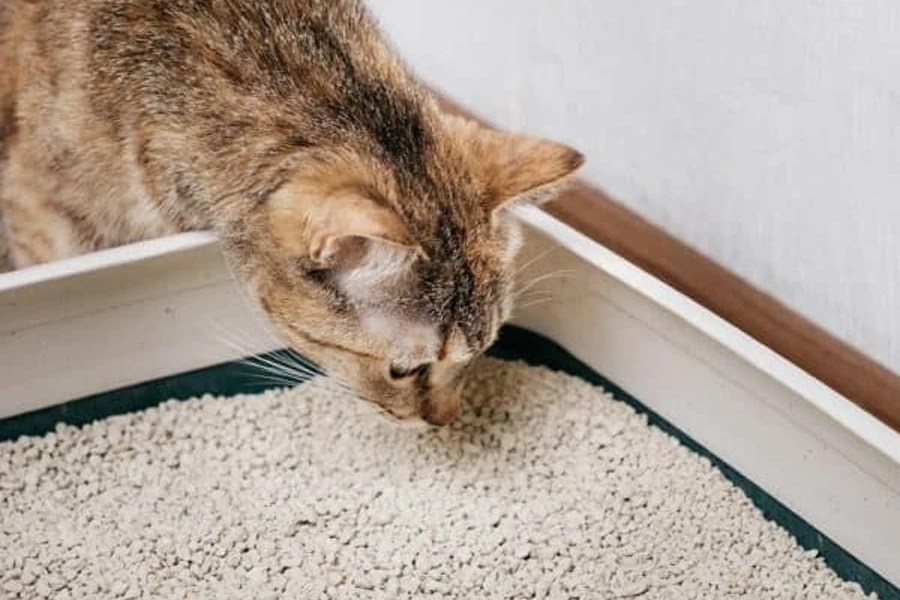
Transitioning from an overview of the landscape, the focus now shifts to the intricate world of cat litter, delving into the variety of materials and their specific uses. The choice of cat litter material can significantly influence not only the hygiene and odor control of the cat’s environment but also their overall comfort and well-being.
Understanding cat litter materials
The array of cat litter materials available today is vast, with each type offering unique benefits. Clumping clay is favored for its high absorbency and ease of cleaning, forming tight clumps upon contact with moisture, which can be easily scooped away, leaving a clean environment for the cat. Silica gel litter, characterized by its crystal-like form, offers a dust-free option and superior odor control, with the ability to absorb several times its weight in urine. On the other hand, biodegradable materials, such as recycled paper, wood, and even corn, present an eco-friendly alternative, breaking down naturally without harming the environment. Each material caters to different priorities, from those emphasizing maintenance ease to those valuing sustainability.
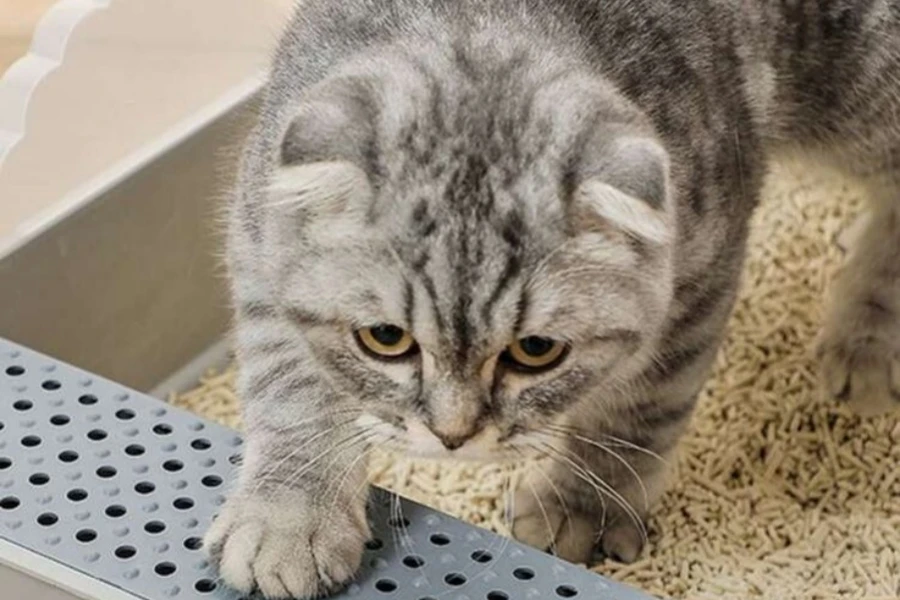
Applications for different litter types
The choice of cat litter goes beyond mere preference, directly affecting the cat’s comfort and the ease of maintaining a fresh, odorless environment. Clumping clay, with its ability to form solid clumps, simplifies litter box cleaning, a feature that might appeal to individuals looking for convenience. However, it can be heavier and may create dust, which could be a concern for cats and individuals with respiratory sensitivities. Silica gel, with its minimal tracking and dust-free nature, could be ideal for maintaining a cleaner home and is especially suitable for indoor cats. Its high absorbency rate ensures that odors are locked in effectively, reducing the frequency of litter changes. Biodegradable options, while being the most environmentally friendly, vary in their absorbency and odor control capabilities. Their lightweight and often dust-free composition can provide a more natural and comfortable litter box experience for the cat.
Choosing the right cat litter material involves balancing factors such as absorbency, odor control, environmental impact, and, importantly, the cat’s comfort. Each type has its place, catering to different needs and preferences, highlighting the importance of understanding the variety of cat litter available. This knowledge ensures that the feline’s health and comfort are prioritized, alongside ease of maintenance and environmental considerations, leading to a harmonious living situation for cats and their caretakers.
2. Insights into the 2024 cat litter market
As the calendar turns to 2024, the cat litter market is poised for significant transformation, shaped by evolving consumer preferences and a push toward innovation and sustainability.
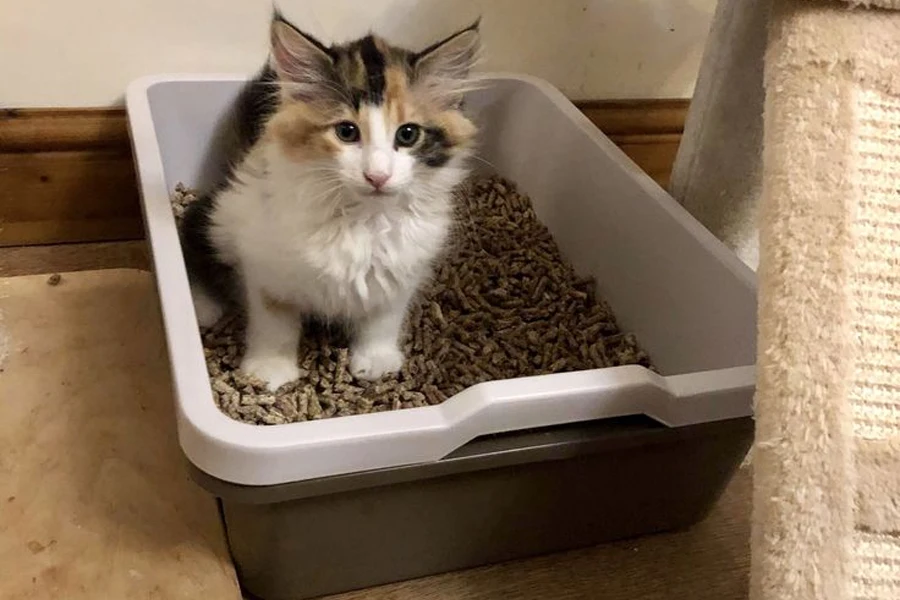
Experts currently value the global cat litter market at US$ 5 billion in 2023, and they expect it to reach US$ 9 billion by 2033, growing at a 6% compound annual growth rate (CAGR) from 2023 to 2033. Another report estimates the global cat litter market size was US$ 10.82 billion in 2021 and is projected to reach US$ 16.44 billion by 2030, growing at a CAGR of 4.76%.
Trends shaping the future
A notable shift is the increased demand for eco-conscious materials in cat litter products. Consumers are now more informed and concerned about the environmental impact of their purchases, driving manufacturers to explore and adopt sustainable practices. Biodegradable materials, such as recycled paper, wood, bamboo, and corn, are gaining popularity for their minimal environmental footprint. These materials not only decompose naturally but often come from renewable sources, reducing the depletion of natural resources.
In parallel, technology integration into cat litter products is on the rise. From litters that change color to monitor a cat’s health to those that can be flushed without harming sewage systems, innovation is at the forefront of the 2024 market. These technological advancements not only offer convenience but also promise enhanced hygiene and health monitoring, catering to the modern pet owner’s needs.
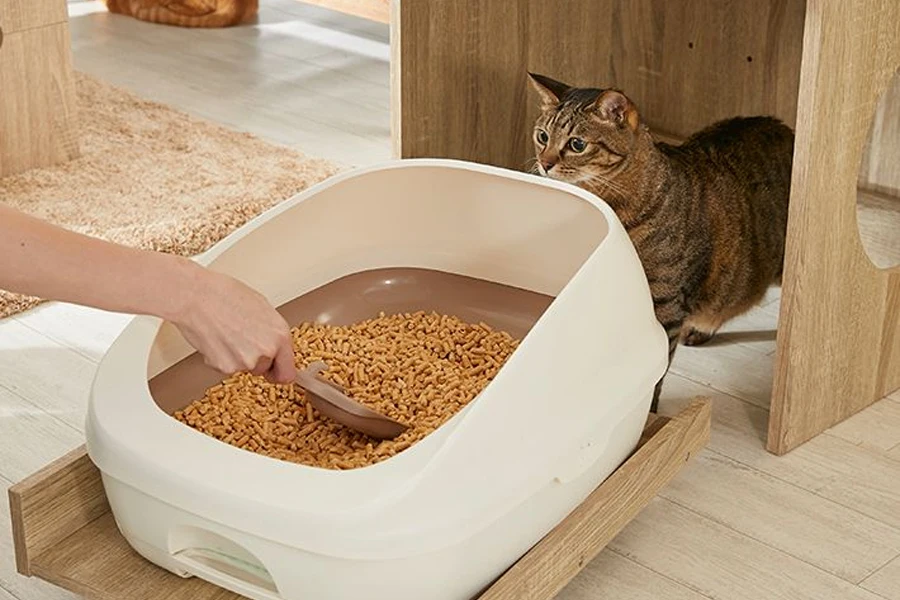
Consumer preferences
The preferences driving consumer choice in cat litter are multifaceted, with environmental impact and convenience being paramount. There’s a growing inclination towards products that align with a sustainable lifestyle, reflecting a broader societal trend towards eco-friendliness. This is not just about the litter itself but also packaging, with a push for recyclable or compostable options.
Convenience remains a critical factor, with time-strapped individuals seeking solutions that require minimal maintenance. Clumping litters that are easy to scoop and silica gel litters that require less frequent changes are particularly favored. Additionally, odor control is a non-negotiable aspect, with consumers preferring litters that effectively mask or neutralize odors without the use of overwhelming fragrances.
The cat litter market in 2024 is characterized by an intersection of eco-consciousness and technological innovation, driven by consumer demands for products that are both convenient and have a reduced environmental impact. These shifts not only reflect changing attitudes towards pet care and environmental responsibility but also underscore the importance of innovation in meeting these evolving needs. As preferences continue to evolve, the market is set to adapt, offering products that cater to the discerning modern consumer while paving the way for a more sustainable and technologically integrated future in pet care.
3. Criteria for selecting superior cat litter
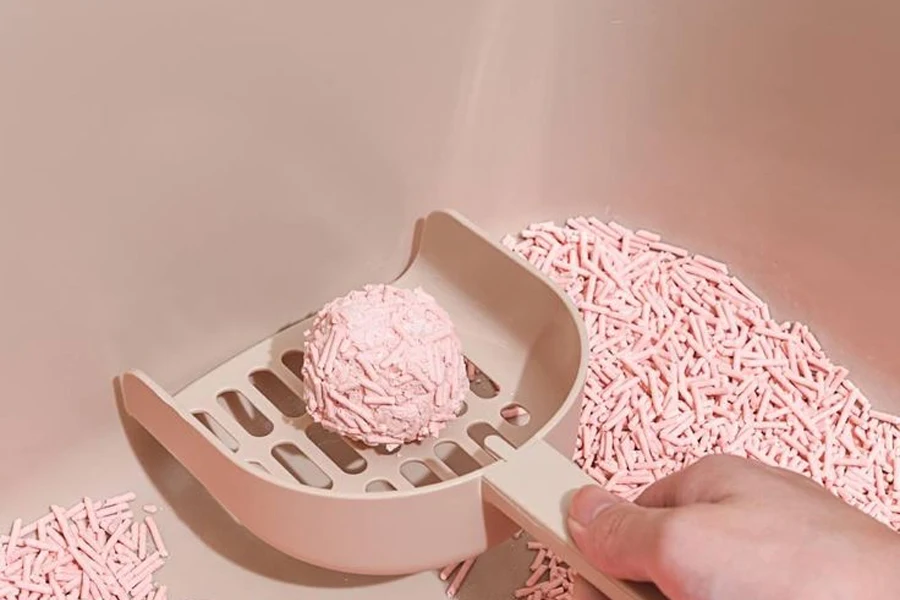
Selecting the ideal cat litter involves a nuanced understanding of several critical factors that impact not only the hygiene and cleanliness of the living space but also the health and comfort of the feline inhabitants. The criteria for choosing superior cat litter encompass a range of attributes from clumping and absorption capabilities to eco-friendliness.
Evaluating clumping and absorption
The ability of cat litter to clump and absorb moisture plays a pivotal role in ensuring easy cleanup and maintaining a dry environment for cats. Clumping litters, particularly those made from bentonite clay, are prized for their capacity to form solid clumps upon contact with liquid waste. These clumps can be conveniently scooped out, leaving behind a clean litter box with minimal waste. Moreover, effective absorption is crucial for controlling moisture levels within the litter box, thereby preventing the growth of bacteria and ensuring the cat’s comfort and hygiene.
Odor management solutions
An essential aspect of cat litter selection is its ability to manage odors effectively. Various litters incorporate activated carbon, baking soda, or other odor-neutralizing agents to mask or absorb unpleasant smells. The choice of litter with efficient odor control mechanisms ensures a fresher environment, reducing the need for frequent litter changes and contributing to a more pleasant living space. Additionally, some litters offer natural scent options to further enhance odor management without overwhelming the cat’s sensitive sense of smell.

Dust reduction and tracking prevention
The health implications of dust and tracking are significant considerations when selecting cat litter. Dust-free or low-dust formulas are essential for households aiming to minimize airborne particles, which can be beneficial for both human and feline respiratory health. Furthermore, litter that minimizes tracking helps maintain cleanliness around the litter box area. Litters with larger granules or those that clump effectively tend to reduce the likelihood of litter being carried out on cats’ paws, contributing to a cleaner home environment.
Eco-friendly and sustainable options
In line with growing environmental awareness, the demand for eco-friendly and sustainable cat litter options has risen. Biodegradable materials such as recycled paper, wood, corn, and wheat offer environmentally responsible alternatives to traditional clay litters. These materials not only provide effective odor control and moisture absorption but also ensure easier disposal and a lower environmental impact. When selecting cat litter, considering the product’s life cycle, from production to disposal, is crucial for those aiming to make eco-conscious choices.
4. Highlighting 2024’s premier cat litters
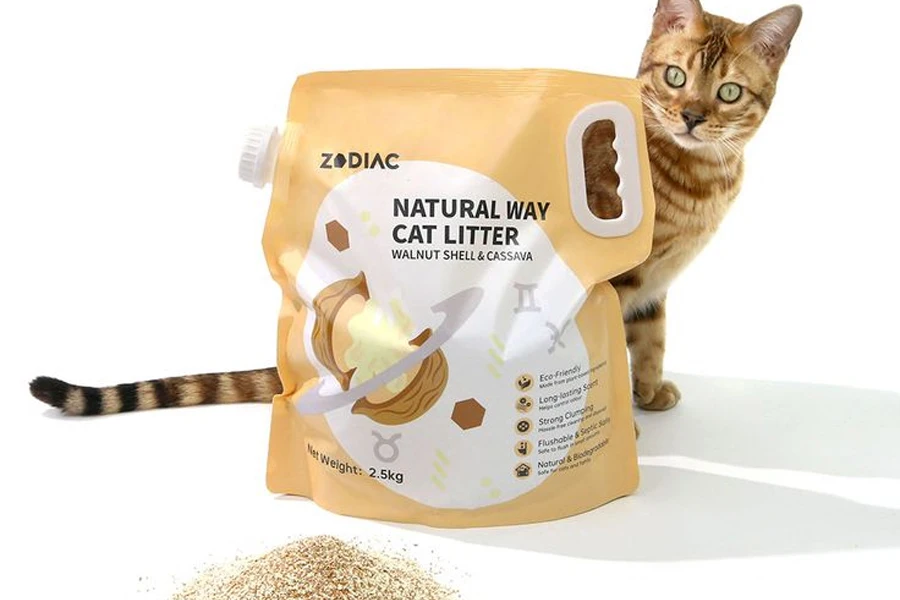
The cat litter market in 2024 showcases a blend of tried-and-true favorites and innovative new entries, each promising enhanced comfort for felines and ease of use for their caretakers. This year’s top picks underscore the industry’s shift towards more sustainable materials, superior odor control, and user-friendly designs.
Dr. Elsey’s Ultra Unscented: The All-Arounder
Dr. Elsey’s Ultra Unscented stands out for its exceptional balance of performance and practicality. This clay-based litter excels in clumping, making cleanup straightforward and efficient. Its unscented formula is a boon for cats and humans alike, minimizing the risk of irritation or discomfort. Despite its fine granular composition, it manages to keep dust to a minimum, addressing one of the most common concerns among cat caretakers. The solid clumps formed upon moisture contact ensure that odors are trapped effectively, maintaining a fresh environment.
SmartCat Unscented Clumping Grass Litter: Eco-Friendly Innovator
SmartCat’s entry into the 2024 market with its Unscented Clumping Grass Litter brings an eco-conscious choice to the forefront. Crafted from 100% renewable grass materials, this litter is not only sustainable but also showcases impressive clumping capabilities. Its lightweight, sandy texture is gentle on feline paws, encouraging use even among the most discerning cats. The absence of any chemical additives or fragrances makes it a safe option, contributing to a healthier litter box environment. Moreover, its biodegradable nature ensures that it leaves a minimal environmental footprint.
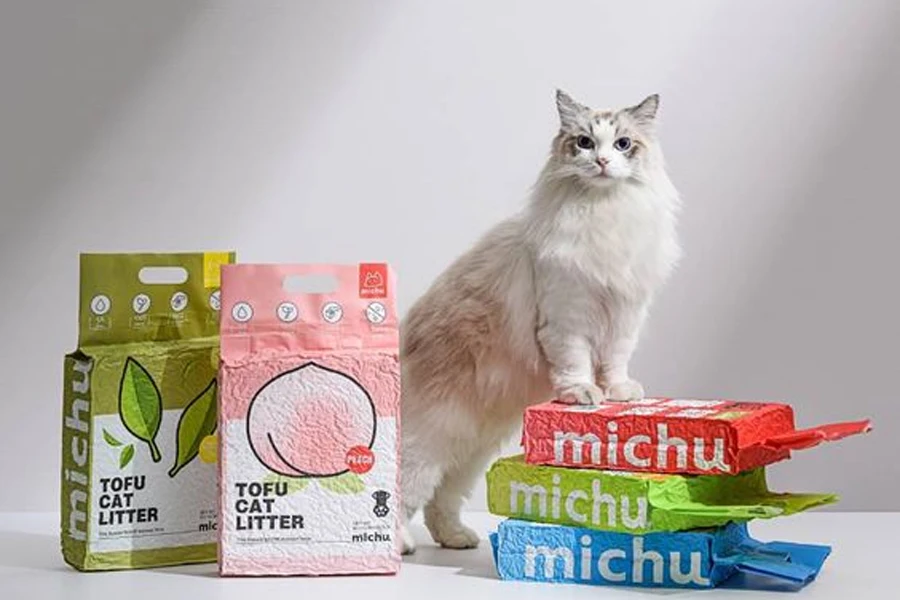
Purina Tidy Cats Naturally Strong: Odor Control Champion
Purina Tidy Cats Naturally Strong has carved its niche as the odor control champion of 2024. Its natural clay composition, enhanced with activated charcoal, tackles odors head-on without the need for artificial scents. The formula’s strength lies in its ability to form hard clumps that are easy to scoop, streamlining the cleaning process. Despite its powerful odor-neutralizing properties, it remains dust-free, promoting a clean air environment within the home. For households seeking an effective, fragrance-free solution to litter box odors, Naturally Strong stands as a top contender.
Emerging Innovations and Niche Products
The cat litter landscape in 2024 is also marked by the emergence of cutting-edge products and niche innovations. These include litters with health-monitoring capabilities, offering insights into a cat’s well-being through color-changing technologies. Another notable trend is the development of flushable litters that simplify disposal while being mindful of environmental regulations. These advancements reflect the industry’s ongoing commitment to improving pet care through technological integration, offering caretakers not just convenience but also peace of mind regarding their cat’s health and the ecological impact of their litter choices.
The selection of cat litter in 2024 is guided by a blend of traditional values—such as clumping efficiency and odor control—and modern priorities like sustainability and technological innovation. Whether the preference leans towards the reliability of clay-based products or the environmental benefits of grass and other biodegradable materials, the market offers options that cater to the diverse needs and values of today’s cat caretakers.
Conclusion
The discerning selection of cat litter, underscored by the varied needs of cats, lifestyle preferences of the caretakers, and environmental impact, is paramount. This careful consideration ensures not only the health and comfort of our feline friends but also aligns with broader ecological goals, fostering a market that is both responsive and responsible. As the industry continues to evolve, these pillars guide the development and adoption of cat litter products, shaping a future where both pet welfare and environmental sustainability are held in high regard.



